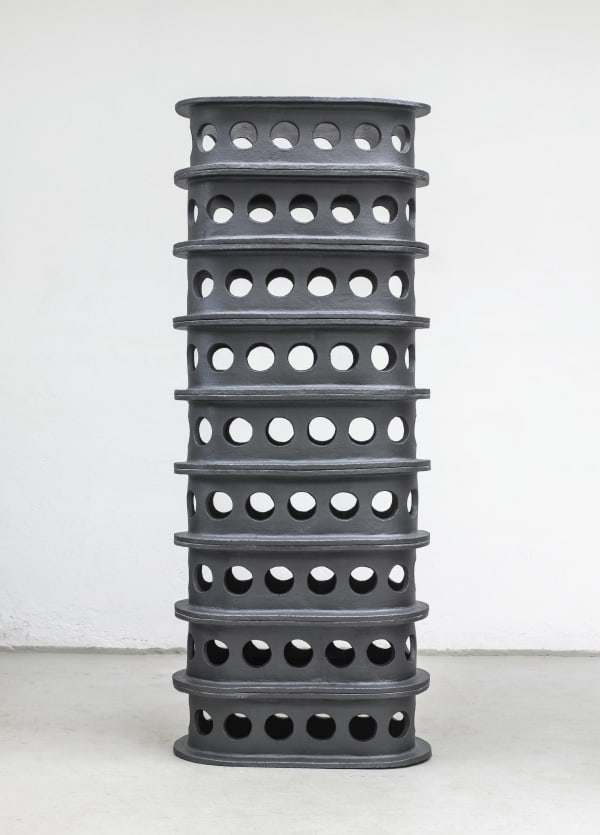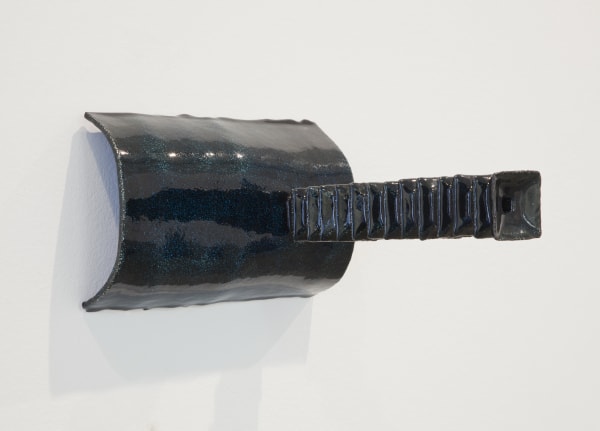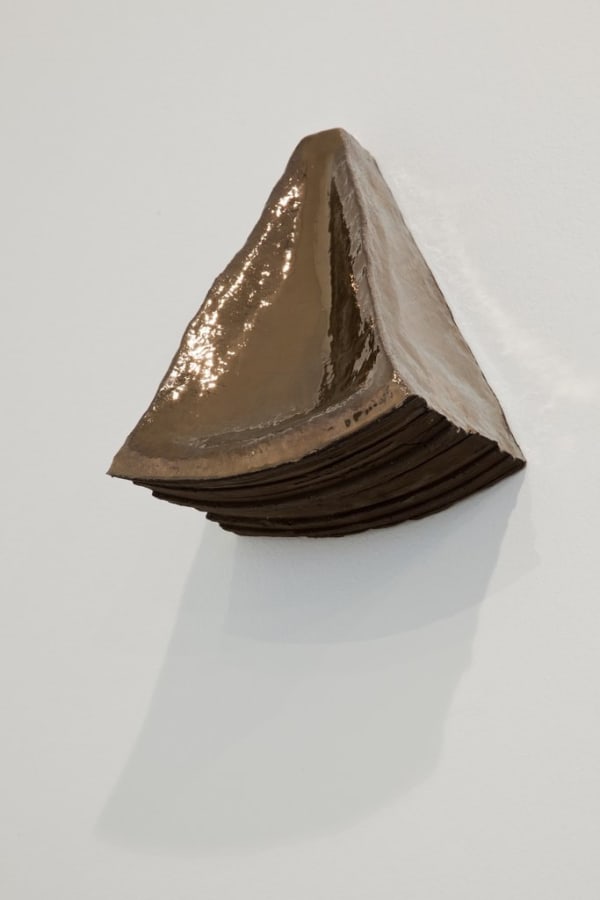ETERNITY SUDDENLY HAPPENS: Leunora Salihu
-
Introduction
Leunora Salihu presents a selection of new large-scale ceramics, which have been produced over the past few months at the European Ceramic Work Centre in the Netherlands. The title of the exhibition Eternity suddenly happens is an allusion to the firing process of ceramics at very high temperatures, the moment at which the previously moist, malleable material is irreversibly changed into its fixed, final form.
Leunora Salihu works with various materials including wood, plywood, plaster, steel and clay, often combining and relating two different materials to either create tension or harmony within a piece of work. In her new ceramics made specifically for her exhibition at Galerie Thomas Schulte, the tension inherent in the work, however, first and foremost resides in the relationship between the whole and the individual parts of its makeup. In the fashion of a kind of modular construction, Salihu uses the rhythmic repetition of an array of round and square elements to create an irresolvable link between the form and its compound segments, thus opening a vast and complex field of associations ranging from architecture, furniture, and design to the anatomy of insects, their hives or nests – associations placing Salihu’s work on the verge of the uncanny. Lured in by an immediate intimacy and familiarity, the fascinating game of interpretation begins only at a second glance and through closer inspection.
The new large ceramics bear titles, which are as short and thus obtuse as the objects they refer to – titles rendering the work reminiscent of surrealist riddles. Turm (Tower), Kette (Chain), Bogen (Arc) or Propeller highlight the contradiction intrinsic to the work: Ceci n’est pas un… the objects are not what their titles so readily promise; neither does the propeller turn, nor do the joints of the chain move. And yet, reflecting on the work process that led to the final object, we come closer to an understanding of how Salihu succeeds in the creation of what might best be described as an analogy to movement in sculpture, in accordance with Lessing’s classical categorisation of sculpture as one of the Raumkünste; as one of the spatial arts.
Friedrich Meschede writes about this phenomenon in relation to Leunora Salihu’s work in the new, first monograph on the artist published on the occasion of the exhibition by Kerber Verlag: “Painting is projection, illusion. Sculpture is always concrete (…). The degree of abstraction of a sculpture is transferred from the level of graspable sequences and working stages to the level of the conceptual presence of the figure as it stands in front of us. This is disappointing, on the one hand, because sculpture is only what it is, what it identifiably represents. On the other hand, it makes sculpture more reflective, because by its very nature it thinks something that cannot be displayed three-dimensionally.” To that end the use of modular construction – of the sequence and repetition of the same segment – can be interpreted as the movement of one single element through space. This impression of dynamic is enhanced by the artist‘s restrained use of colour, which puts shape and material affect into focus, and through the artist’s preference towards the creation of works that are “formally open,“ meaning that the repetitive elements of a work could in theory be continued, repeated, and the piece extended.
-
Installation Views
-
Works
-
Inquire about works by Leunora Salihu

-
Artists on view













